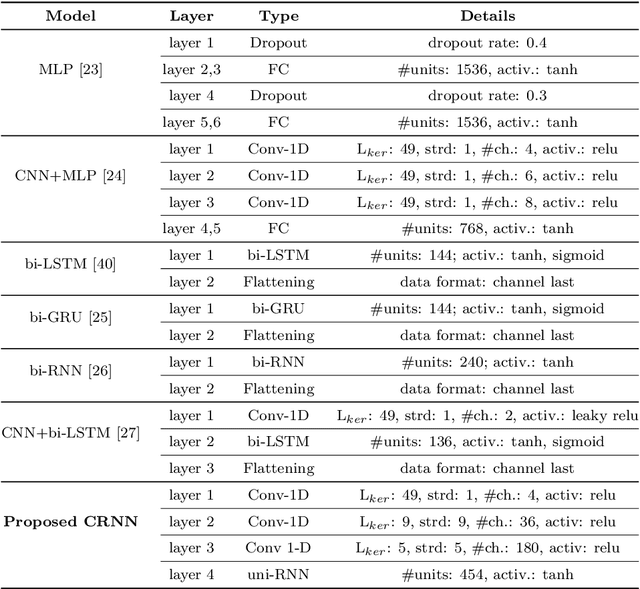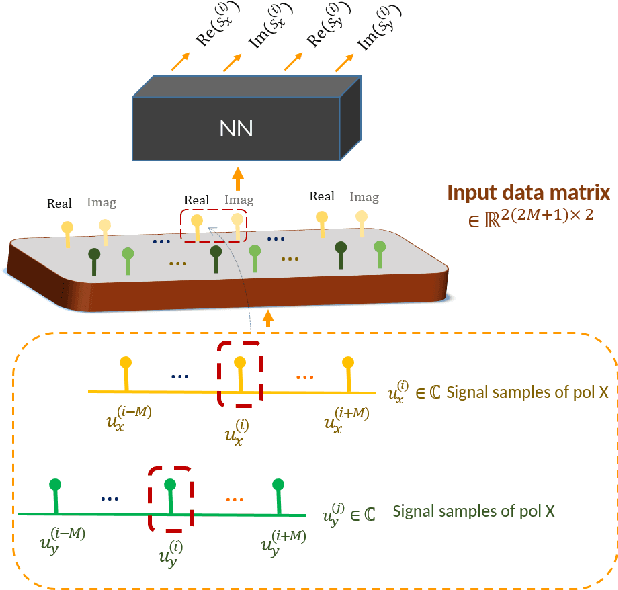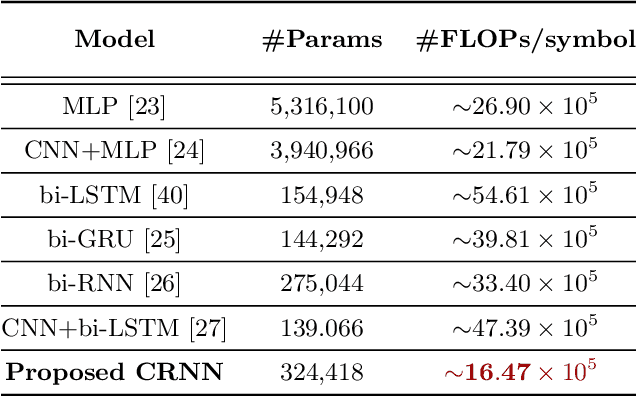Abtin Shahkarami
Complexity Reduction over Bi-RNN-Based Nonlinearity Mitigation in Dual-Pol Fiber-Optic Communications via a CRNN-Based Approach
Jul 25, 2022



Abstract:Bidirectional recurrent neural networks (bi-RNNs), in particular, bidirectional long short term memory (bi-LSTM), bidirectional gated recurrent unit, and convolutional bi-LSTM models have recently attracted attention for nonlinearity mitigation in fiber-optic communication. The recently adopted approaches based on these models, however, incur a high computational complexity which may impede their real-time functioning. In this paper, by addressing the sources of complexity in these methods, we propose a more efficient network architecture, where a convolutional neural network encoder and a unidirectional many-to-one vanilla RNN operate in tandem, each best capturing one set of channel impairments while compensating for the shortcomings of the other. We deploy this model in two different receiver configurations. In one, the neural network is placed after a linear equalization chain and is merely responsible for nonlinearity mitigation; in the other, the neural network is directly placed after the chromatic dispersion compensation and is responsible for joint nonlinearity and polarization mode dispersion compensation. For a 16-QAM 64 GBd dual-polarization optical transmission over 14x80 km standard single-mode fiber, we demonstrate that the proposed hybrid model achieves the bit error probability of the state-of-the-art bi-RNN-based methods with greater than 50% lower complexity, in both receiver configurations.
 Add to Chrome
Add to Chrome Add to Firefox
Add to Firefox Add to Edge
Add to Edge